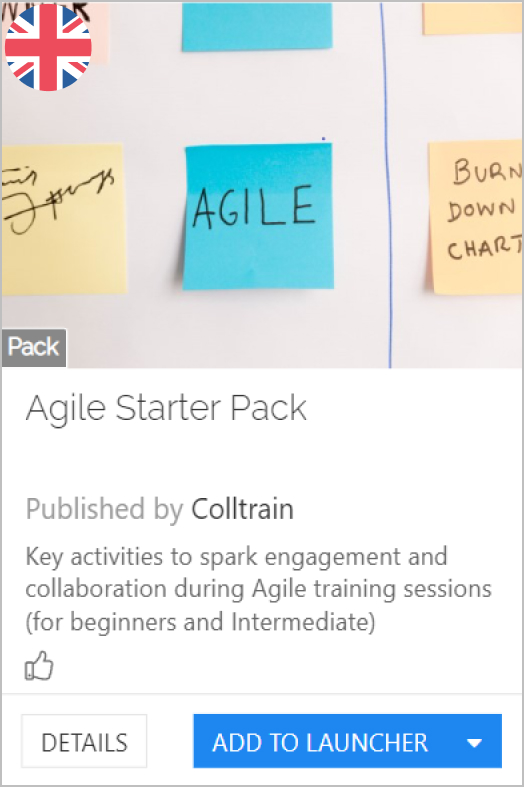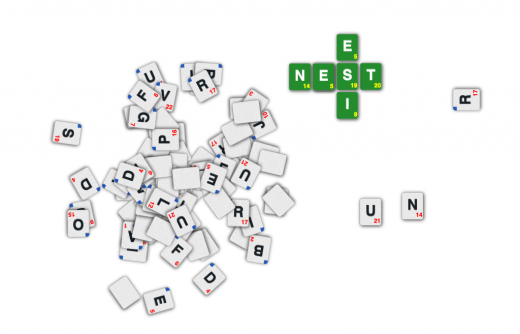Agile Starter Pack (1)
Time-boxed activities ready to spark engagement in your Agile training
The activities in this collection are focused on experiential, collaborative learning experiences for delegates at the beginner and intermediate levels. The activities help delegates develop an agile mindset and skills.
Included Activities
1. Current way of working
This contrast activity allows participants to focus on both pros and cons of the current way of working. This helps deal with their tendency to focus on only one of them. Having the whole picture, they can start making the proper adjustments to the way they work. Also, this simple list brings complexity to the table. More perspectives on this topic create a feeling of “we’re in this together and together we will find a solution”.
Group size: 1-5 teams of up to 4-7 participants/team
Duration: 35 min; additional 3min/team if more than 3 teams

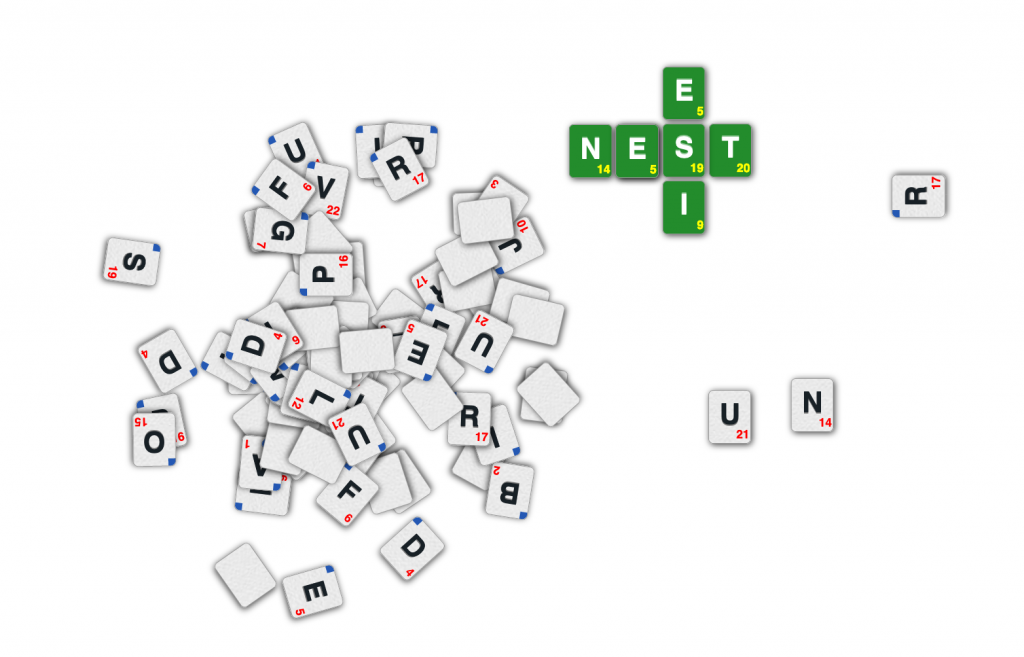
2. Four magic letters
An experiential activity using the alphabet, but with a little twist. The trainers ask the participants to form only 4-letter words (as in Four Magic Letters :)). The goal is to form as many as possible in 2-minute rounds. To do this, they will have to come up with a strategy and proper approaches. While doing this, key aspects of team collaboration and change management reveal themselves.
Group size: 1-5 teams of up to 4-6 participants/team
Duration: ~35 min for 3 teams
3. Flip-a-card
Participants practice flipping and moving cards by using different batch sizes. They do this for 4 iterations and thus discover how one can approach the workload in a more efficient way. Think agile!
Group size: 1-5 teams of up to 7 participants/team
Duration: ~20 min
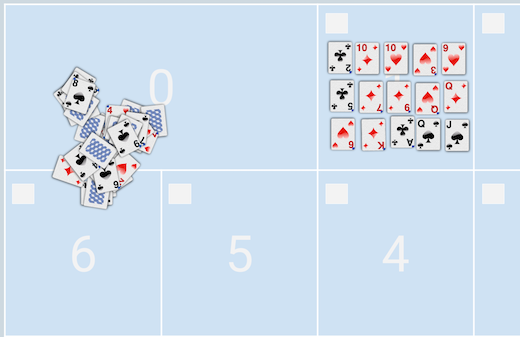
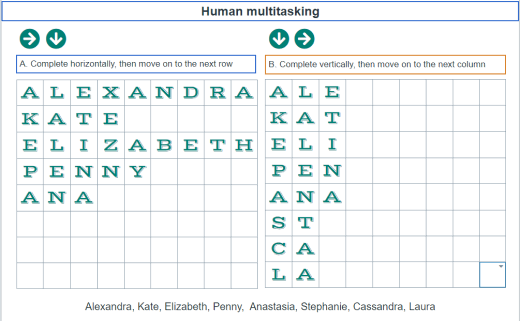
4. Human Multitasking
Participants play with writing a series of names in different ways. This is to experiment on how jumping from one task to another affects their performance. It impacts in a negative way both their efficiency and effectiveness. This activity helps them understand when and how they lose energy. This energy is much needed to reach daily objectives on a long term.
Group size: 2 -15+ participants
Duration: 15 min
5. Daily Stand-up
Participants simulate a daily SCRUM meeting of 15 minutes. This way they learn how to keep track and communicate their SCRUM team’s progress. This activity helps them understand how to do it in a non-evaluative manner. Also, they discover that challenges may only seem outside their control area. Teammates step in and provide valuable input on the spot. Thus, they can manage their energy in a more effective way.
Group size: 1-5 teams of up to 4-7 participants/team
Duration: 25 min

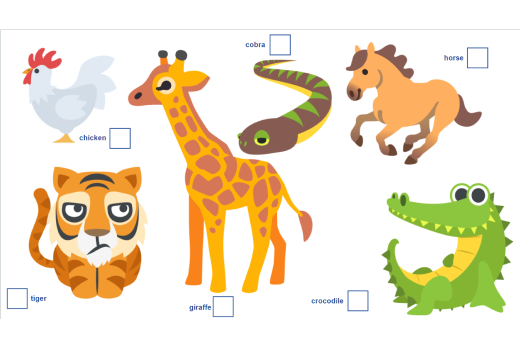
6. Agile Animal Estimating
Scrum teams often use Story Points to estimate user stories. To better understand estimates participants will use the adapted Fibonacci sequence to ease the estimating process.
The Agile Fibonacci sequence provides a more realistic way to approach estimates by using story points, which represent the size, complexity, and effort needed for completing or implementing a user story. In this case, they will estimate animals in Story Points as a first step to getting hands-on experience with this technique.
Group size: 1-5 teams of up to 2-9 participants/team
Duration: 35 min for 3 teams; additional 3 min/team if more than 3 teams
7. SCRUM roles
Participants match specific responsibilities written on the cards with the appropriate SCRUM role. This way, they gain more clarity and a deeper understanding of the SCRUM roles. Also, they become more competent in recognizing or establishing who has to do what. Use this activity as a recap exercise or to break the ice on the matter. You can then debrief on their sometimes biased perception.
Group size:
Group size
1-5 teams of up to 5 participants/team
Duration: 20 min

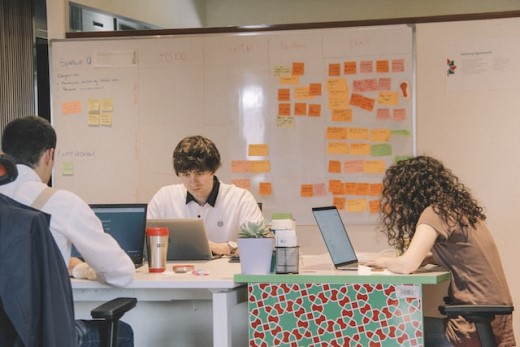
8. Better Agile…
This brainstorming activity helps participants refine their approach to become better agile team members. They think of 3 main perspectives: collaborating with others, achieving better results and developing skills that improve their general performance. There are no good or bad ideas, only options that each should test and validate for themselves.
Group size: 1-5 teams of up to 3-4 participants/team
Duration: 30 min for 3 teams; additional 3 min/team if more than 3 teams
9. Elements of Value x3
Participants discuss and share with their teammates the insights they gained during the training session from 3 perspectives: something new, something they like, and something to apply to their work. Being in agreement or having different opinions bringbrings both validation and complexity to the table.
Group size: 3 participants/team
Duration: 15 min; additional 3 min/team if more than 3 teams

Explore Agile Starter Pack in Colltrain
Note: All activities follow CARTA Guide, available here.
